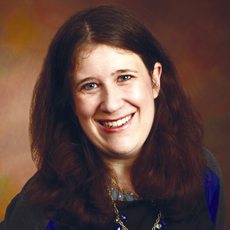
If there’s a subtopic in long-term care that’s been on my radar the latter part of 2014, it’s telehealth. From Jewish Home Lifecare winning a McKnight’s Excellence in Technology Award for their project with Panasonic, to attending a session at LeadingAge on telehealth mental services, to moderating a Care Innovations telehealth webinar this week, it’s clear more long-term care providers are trying to decipher this enigmatic issue.
I believe the progressive members of the industry are sold on the benefits – the data in several telehealth projects reflect an increase in care, with one study showing a reduction in rehospitalizations among Medicare home health beneficiares. Care Innovations CEO Sean Slovenski, in the Dec. 16 webinar, discussed the Mississippi’s Diabetes Telehealth Network care management program, which has helped 25 enrolled patients stay out of the emergency room and hospital.
The big questions from providers, however, tend to be around reimbursement and the equipment. The former can vary by region and state, but in the latter category, Davis Park, the director of the Front Porch Center for Innovation and Wellbeing, has expertise to share. In 2011, Front Porch submitted a proposal to University of California-Davis to implement model ehealth.
“We really wanted to bring these services to people where they already lived,” he told me. “We really wanted to shorten that distance to access to care.”
The grant they received — a quarter of a million dollars — was largely for equipment. Front Porch embarked on four different activities with the money. The overall project ran from October 2011 to fall 2013.
First up were computer classes where participants were taught how to access search engines and participate in Dakim, the brain fitness program. The second was called “Big Screen” health, where video conferencing was used to broadcast workshops such as how to address mood changes. The third was called “Know Your Health,” which involved teleconsultations with individuals at home or in a community setting who were connected to professionals. During the pilot phase, the specialist was a podiatrist. A subcomponent of this activity, Park said, was patient monitoring, where 100 people were enrolled who were residing in independent living units. Vitals and blood pressure were recorded at least once a week via tablets, and the information was uploaded to a call center. The fourth area was the deployment of electronic health records within community clinics.
If this sounds overwhelming, Park advises breaking it down. The first issue is getting community partners to offer their time and/or staff. Park found groups were willing to do this in exchange for learning the equipment, especially related to patient monitoring. As Slovenski pointed out, the partnership begins by making the phone call. Park says that it wasn’t with “some trepidation” that his team reached out to medical partners. But since there is “a shift in perception around healthcare delivery models,” many saw the projects as a way to help increase patient care.
“They saw this is where things were headed,” Park says. “The technology is changing so much.”
The second piece of advice relates to identifying and possibly narrowing down needs. Front Porch “really wanted this to be a wellness project,” but other providers should look at their area and facility to see what the biggest problem is, such as discharge management, rehospitalizations or specific illnesses such as COPD, Park says.
The third — and easiest — piece of advice is to think small.
“You can start with serving five people,” he said. “Or enroll half a dozen people who have recently been discharged from acute settings and monitor them. See what kind of nursing resources are available, and see how it goes.”
Finally, telehealth success is not just about the medical partners — it’s also about getting academics on board. UC-Davis did the Front Porch study pro bono … might your local university do the same? We know there is a critical lack of hard research in long-term care, and I have to believe there are master’s or doctoral students out there who would love the ability to conduct a study related to seniors and telehealth. Not coincidentally, connecting to an academic medical center may also allow access to additional grants and funding for equipment you want.
Everyone in direct patient care is often stretched. But we are at a juncture where you must think about what can impress potential hospital partners, involve your physicians and perhaps become a marketing tool for your facility. The answer, for you, may not be telehealth, it may be a germ-zapping robot. Whatever it is, in 2015 your facility must find a way to differentiate from the pack.
Elizabeth Newman is Senior Editor at McKnight’s. Follow her @TigerELN.



